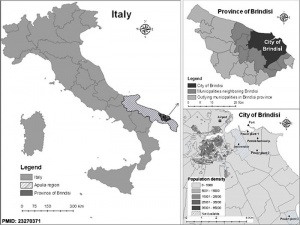Europe Statistics: Difference between revisions
From Embryology
No edit summary |
|||
| Line 4: | Line 4: | ||
==Some Recent Findings== | ==Some Recent Findings== | ||
{| | {| | ||
|-bgcolor="F5FAFF" | |-bgcolor="F5FAFF" | ||
Revision as of 11:01, 8 March 2013
Introduction
| Statistics Links: Introduction | Reports | World Population | World Fertility | World Infant Mortality | Maternal Mortality | Australia | Brazil | Canada | China | Germany | India | Indonesia | Europe | Myanmar | Netherlands | Spain | United Kingdom | Romania | Uganda | United States | BGD Tutorial - Applied Embryology and Teratology | National Perinatal Statistics Unit | AIHW | Category:Statistics | |
|
Some Recent Findings
|
Italy
Congenital anomalies among live births in a polluted area[2] "Congenital anomalies and their primary prevention are a crucial public health issue. This work aimed to estimate the prevalence of congenital anomalies in Brindisi, a city in southeastern Italy at high risk of environmental crisis. This research concerned newborns up to 28 days of age, born between 2001 and 2010 to mothers resident in Brindisi and discharged with a diagnosis of congenital anomaly. ...Our findings indicated an increased prevalence of Congenital Anomalies (especially congenital heart diseases) in the city of Brindisi. More research is needed in order to analyze the role of factors potentially involved in the causation of congenital anomalies."
